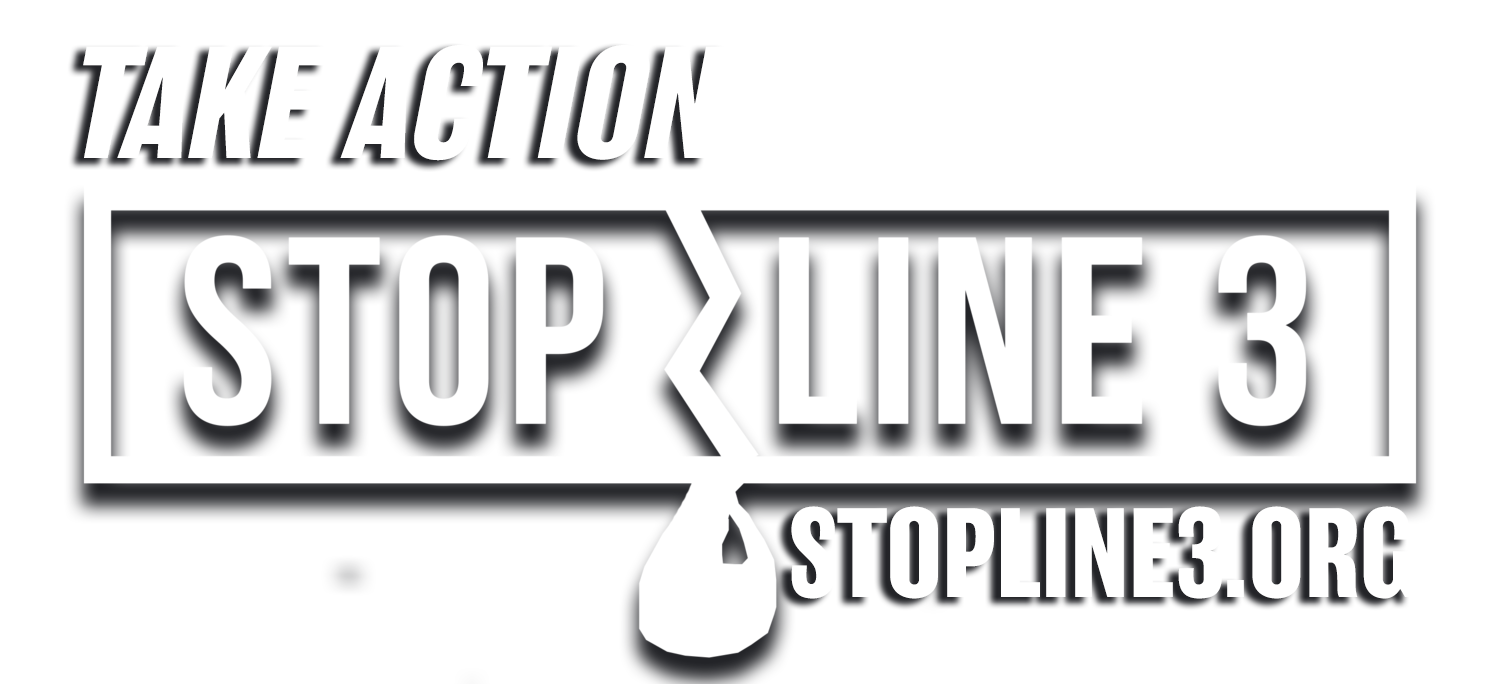Minnesota Representative Mary Kunesh-Podein speaks after a "Dance for the Water" event in St. Paul, just before the DEIS public meeting on June 13, 2017. Photo: Jaida Grey Eagle.
The Minnesota Department of Commerce received approximately 3000 public comments on the Draft Environmental Impact Statement (DEIS) for Line 3, including from landowners, tribal members, organizations, businesses, City Councils, tribal governments, state agencies, federal agencies, and elected officials. A group of 36 Minnesota legislators submitted extensive comments together, and expressed concerns about inadequacies in the DEIS sections on spill modeling, pipeline abandonment, climate change, disproportionate impacts on tribal people, treaty rights, and the No Build Alternative. Among the 36 were almost all of the members of the recently formed People of Color and Indigenous Caucus, including 4 Native American women Representatives: Peggy Flanagan, Jamie Becker-Finn, Mary Kunesh-Podein, and Susan Allen.
Many of the parties intervening in Minnesota's contested case process for the project submitted very extensive and technical comments, totaling well over 1000 pages. Some of these parties, which include tribal governments, environmental organizations, and individuals, pointed out specific ways in which the DEIS violates the state law that dictate the EIS process, the Minnesota Environmental Policy Act. Several groups called on the DOC to issue a new Draft EIS after addressing the document's significant shortcomings, so that the public has an opportunity to comment on the new material.
In their comments, the 36 state legislators say: “We find the DEIS to be flawed in several areas. The following deficiencies in the DEIS should be addressed prior to issuance of the final document. These include:
Failure to appropriately quantify oil spill exposure to drinking water sources
Tribal considerations and Line 3 abandonment
Stronger emphasis on climate considerations and impacts
A more comprehensive analysis of a no-build alternative”
The legislators point out that “The DEIS does not analyze the potential harm of a spill to the million plus Minnesotans who drink Mississippi River water.” They cite a spill modeling study conducted for Northern Minnesota during the environmental review for the Alberta Clipper pipeline, which concluded that a tar sands pipeline spill in the Upper Mississippi River would result in “elevated levels of benzene (above the Safe Drinking Water Act Max Contaminant Level (MCL)) some 280 miles downstream. Because the Mississippi has many bends and loops, the 280 miles from Grand Rapids reached the St. Cloud water intake but not the intakes for Minneapolis and St. Paul. Since the new corridor at Palisade is south of the old one, the EIS must analyze the potential for benzene to reach Minneapolis and St. Paul intakes.”
They also pointed out that the major oil spill study recently funded by the State is not included in the DEIS: “Since petroleum spill data is outdated and new technology is available, the Minnesota legislature funded and the Governor signed into law an investigation that will reassess the toxicity of petroleum spills (SF 550, 90th Legislature, 8, 2017)...The investigation is being conducted by faculty at the University of St. Thomas with the assistance of the United States Geological Survey ‘for use by regulatory agencies, such as the MPCA and MDH.’ The EIS must either incorporate the data from this investigation or complete its own investigation using the new technology that is available.”
The City of Grand Rapids, Minnesota, also submitted comments on the DEIS, focused on the issue of pipeline abandonment. The Grand Rapids City Council comments expressed concern about the threats that pipeline abandonment poses for rural northern communities, especially to drinking water sources, and stated that the DEIS did not adequately assess the potential risks, liabilities, potential mitigation methods, etc, associated with abandoning the existing Line 3. The city requested the “total removal of Line 3” and any contaminated soils from areas surrounding their municipal water source and any urban developed areas.
Just 3 days later, Michigan's Attorney General called for shutting down Enbridge’s line 5 pipeline beneath the Straits of Mackinac between Lakes Huron and Michigan. Just as the fossil fuel era ends, a generation of old pipelines, installed in the 50s and 60s, is reaching the end of its life, and some jurisdictions are recognizing the profound liabilities that stranded infrastructure poses, and are taking action to avoid setting precedent that allows pipeline companies like Enbridge to just walk away.
The group of 36 legislators also called for more analysis of pipeline abandonment issues: “Given the number of spills associated with Line 3, particularly the quantity of oil spilled and leaked since the Line started operation, the EIS must address issues of abandonment and site clean-up. The EIS must also quantify the costs and environmental liability for damages caused by the line, and identify the source of funds for hazardous materials clean-up.”
The Shallow/Sand Lake Association also submitted comments echoing these concerns: “Based on the information in the D-EIS, the Shallow/Sand Lake Association requests that Line 3 be removed from the corridor running across the north side of the lake from Shallow Lake Road to Warba, from proximity to wetlands to the west that drain into Shallow Lake and any area where deterioration of Line 3 would threaten the health of the lake. We appreciate the opportunity to give input to an issue, the abandonment of an oil pipeline, which has little or no precedent in our country and encourage the Public Utilities Commission and all state entities to pursue this with great caution.”

